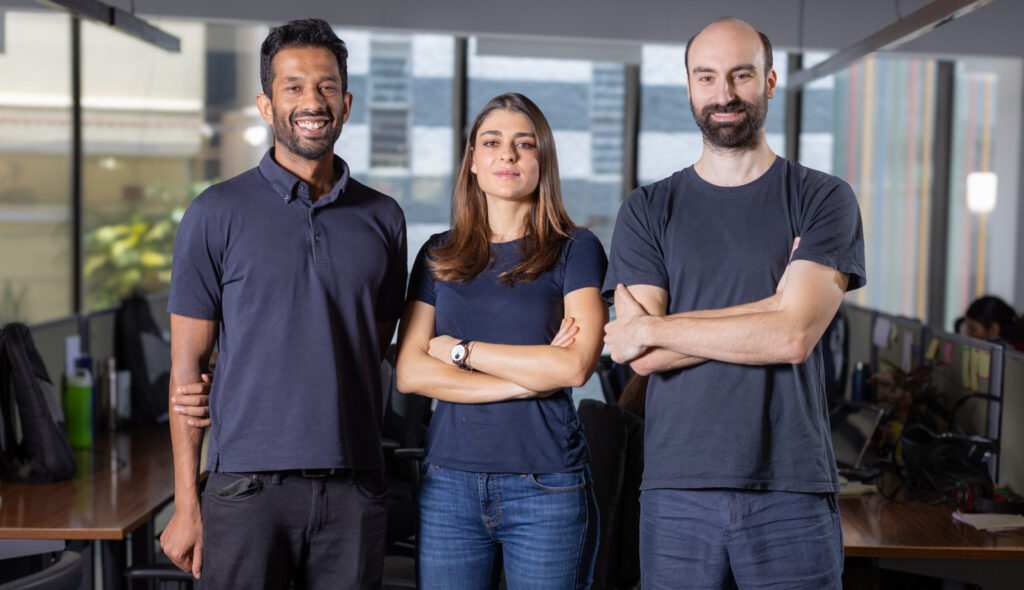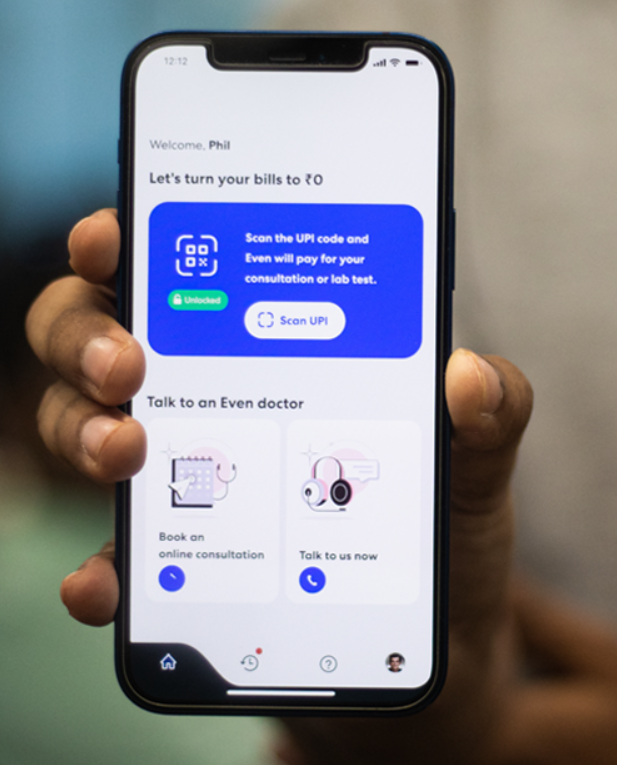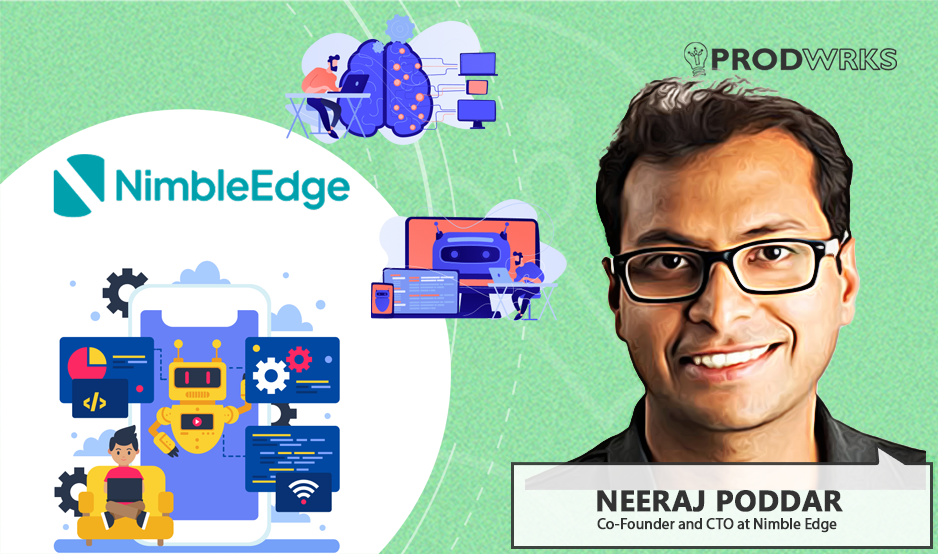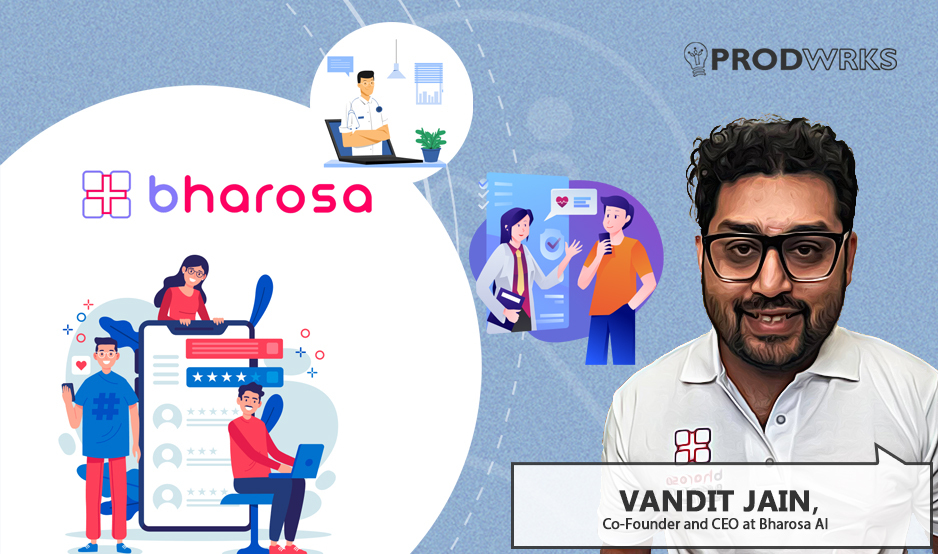
Every year, 7% of India’s population is pushed into poverty due to healthcare costs. I had to double-check when I read this line in a Niti Aayog report on Health Insurance for India’s Missing Middle. The stat is so staggering that it doesn’t feel real.
This devastating statistic is the outcome of a system that is fundamentally misaligned, where healthcare is reactive and often economically catastrophic for the average Indian family. The conviction that the system itself is broken and needs to be fixed, is the engine that drove Mayank Banerjee to start Even.in in 2020 with co-founders, Matilde Giglio (COO) and Alessandro Davide Lalongo (CTO).

Even is a healthcare industry rebel that defies easy categorization. It’s not just an insurance company. And, it’s not just a healthcare provider. It’s a full-stack amalgamation of both. What if your health insurer was incentivized not to just pay your bills, but to actively keep you out of the hospital in the first place? That’s Even.
Even Healthcare provides its members with free consultations, diagnostic tests, and cashless hospitalisation, through its owned network of clinics and partner clinics and insurance providers across India. So far they have raised more than $50 million since inception, with the latest $30 million Series-A round in October led by global investors, including Khosla Ventures.
This is the story of Mayank’s journey building Even into what he calls “a healthcare system for 2047.”
We deep dive into a model that fuses the roles of payer and provider, leveraging technology as the connective tissue for a more humane, efficient, and proactive approach to care delivery.
Solving India's OOPE Problem
To understand Even, one must first understand the journey of Mayank. Born in Agra and raised in the UK, Mayank is the son of a doctor. While he did not follow his father’s footsteps and instead studied Philosophy, Politics, and Economics at college, the ethos of care was deeply ingrained in Mayank.
After studying and working in London, he moved to India in 2018, immersing himself in healthcare policy. It was here that the scale of India’s healthcare challenge dawned on him.
India has one of the world’s highest out of pocket expenditures (OOPE) in healthcare, where the majority of healthcare spends are not via insurance but from personal savings and debt. As per the Economic Survey in the Union Budget 2024, India’s OOPE on healthcare hovers around 50% of the total health expenditure of the country!
The government’s tax revenue is insufficient to support universal healthcare like the UK’s NHS, and insurance penetration remains low, leaving millions vulnerable. This systemic problem had a personal face for Mayank. When he was 13, his uncle in India, his Bauji, was diagnosed with pancreatic cancer.
“For about four or five years of treatment, it was a drain on him financially, and then the family financially. Had he lived in the UK, I'm not saying the result would have been different, but at least that kind of financial burden, the life turning upside down, probably wouldn't have been the same. And I think that's wrong.”
Why "Sick Care" is a Losing Game
Another fundamental flaw in healthcare systems around the world, including India, is that healthcare is predominantly “sick care.” The current model is fee-for-service (FFS), a transactional arrangement where patients pay for services only when they are ill.
“It’s a system where you basically wait for someone to get ill, charge them a whole bunch of services and then treat them,” Mayank explains.
“Basically you pay them (insurance companies) X number of lakh to cover you, your family, or your employees. Where there is a claim, they pay out. But all of the healthcare delivery is managed outside this system. The insurance has no part of it.”
“Healthcare and insurance today is like walking into a restaurant with a blank check and saying, 'Hey, charge me whatever.' You probably came in for something simple. But the restaurant would want you to order Shami Kebabs and all this other stuff because someone else is paying for it. And you'd be fine with it.’”
This “whatever” attitude, when applied to healthcare, leads to over-testing, over-treatment, and inflated bills, a phenomenon familiar to anyone who has navigated the corporate hospital landscape with an insurance card. The system financially rewards activity, not outcomes.
Even’s thesis is that to fix this, you must realign the incentives. What if the entity paying the bills was also the one providing the care? This is the core principle of “managed care,” a concept famously pioneered by organizations like Kaiser Permanente in the US and embodied by the UK’s National Health Service (NHS).
“And that's why we thought the only way to make health insurance better or work more effectively for the patient is to actually have the healthcare side as well and to cover both sides of it,” Mayank explains.
But he is clear that he’s not just copying a 75-year-old model. He’s building for India, for today.
“I know how great the NHS is. The downside is it's pretty slow. If I want to speak to a doctor in the NHS, I might have to wait two weeks for a GP consultation. That kind of defeats the whole purpose of preventative care.”
The Even Model: A Hybrid of Payer and Provider
So, what is Even? To a consumer, as Mayank puts it, it’s “the best possible version of health insurance.” But under the hood, it’s a sophisticated, vertically integrated system.
The offering is layered. The base is Even Care, which provides unlimited, 24/7 access to Even’s in-house team of over 100 doctors and wellness experts for episodic, lifestyle, and managed care. Members can then add optional group insurance plans like Even Essential and Even Plus for comprehensive OPD and IPD coverage through their insurance partners.
The genius of this structure lies in its value proposition. The cost of the Insurance + Even Care is about the cost of a standard insurance in the market. The biggest difference is that it also covers outpatients.
“If I was looking for 10 lakh rupees worth of insurance in the market, it would cost Rs.15,000. But it would only cover when you have an overnight hospitalization. If you’re an Even member, for the same price, you’ll get up to 10 lakh worth of outpatient insurance, proactive health checkups, and we invest in their entire healthcare journey. From the consumer point of view, I think it's a no brainer,” Mayank explains.
The challenge, Mayank admits, is “still finding a way to make money.” But the underlying bet is that the economics will work if the model is sound. “The whole point of preventive care is, if you invest, let’s say, 100 rupees in tests, and those 100 rupees over a long enough time horizon, save you 101 rupees in claim costs.”
This isn’t just a digital-only play. Even operates five physical clinics in Bengaluru and is on the verge of launching their own hospital. Mayank says that this physical infrastructure is crucial. It signals a deep commitment to owning the entire care journey and allows Even to control quality, cost, and patient experience in a way that partnerships never could.
“The product for us is not even digital. It's the whole thing,” he asserts. “It's the entire healthcare delivery. Digital may be the starting touch point. But we still have a physical body and my body is the problem. So at some point you need to interact with something offline.”
Phygital Challenges and In-House Solutions
However, integrating the digital app with physical clinics and a hospital has been Mayank’s “biggest challenge.” Off-the-shelf clinic management software is built for traditional, offline-only workflows.
"They're not really used to the idea of there being a telemedicine journey at the start, or a chat journey that happens offline. The result? We have been forced to build a lot of tooling in-house."
This extends from their EMR systems to their claims processing engine, which has to handle 30,000-40,000 claims a month, a volume that traditional IPD-focused systems are not built for.
This highlights a critical lesson for founders in hybrid spaces: be prepared to build your own infrastructure, because existing SaaS solutions are often designed for the legacy models you’re trying to disrupt.
The Product is the Experience
Perhaps the most potent insight from Mayank is how Even sources its product roadmap. It is driven by conversations that users have with Even’s CX team. If a CX agent is repeatedly explaining the same process to users and solving the same problems, that process is broken and ripe for a product-led solution.
“The entire product roadmap is taking what we currently handhold our users through, manually, through a CX team, and basically finding ways to automate that, finding ways to understand what is the actual underlying problem, and then building it with tech.”
A perfect example of this philosophy in action is Even’s cashless payment feature with a UPI scanner.

The Even team identified that the reimbursement process was a “massive pain” for users.
“The paperwork around reimbursement, like sending a bill, attesting a copy, signing your name is just frustrating. Our team listened to users who hated the process and didn't trust they would be paid back promptly.”
An obvious first-step solution would have been to build a feature to automate the reimbursement payment after the user paid out-of-pocket. But the team took a step back and questioned the core premise: Why do the users even need to pay from their own pocket?
“They've paid us money and we can pay it for them. It should be that simple,” Mayank says.
This fundamental reframing led to the creation of a UPI scanner within the Even app. A member can go to a diagnostic lab or a hospital, even one outside Even’s direct network and scan the lab’s QR code, and pay directly from Even’s account.
It’s an elegant solution that kills multiple birds with one stone: it eliminates the user’s out-of-pocket expense, vaporizes the reimbursement process, and instantly expands Even’s “cashless” network to any facility in India with a UPI code. It’s a feature born not from asking users what they wanted, but from deeply understanding what they hated.
Solving for Convenience, Not "Education"
“We know that alcohol is bad for us and cigarettes are terrible. But people still do it. It's not an education problem at all. I actually think it's a convenience problem.”
Growth, GTM, and the Realities of the Indian Market
With over 400,000 users, Even has achieved significant traction. Its growth strategy is as pragmatic as its product philosophy. Mayank revealed that the first users were, predictably, people he knew. But the critical validation wasn’t what they said. It is when they paid and when the first customers were retained.
“That’s the only validation that counts,” says Mayank.
As the company scaled, growth became a function of experience. Most of Even’s growth was through referrals. “Precisely, 40% of our consumer growth has come from referrals,” he shares.
This isn’t the result of a fancy referral program, but a direct consequence of a product that works and delivers tangible value. Mayank believes that in a low-trust category like insurance, a positive, high-touch experience is the most powerful marketing tool.
Even’s pricing strategy is also rooted in market reality. “I actually think you have a lot less control on pricing than you think, at least in a market like insurance, where people have a mental model of what it should be,” he observes.
He believes that the strategy is to be competitive with the market price for standard insurance while offering a demonstrably better product with more inclusions, like OPD. The target customer segment started with the classic Indian user who values and pays for convenience. Typically people who use Swiggy to order food or Ola and Uber to book cabs.
But as the value proposition has become clearer, the base has broadened to a more representative sample. Typically, the top 10% of earners in India, often the educated and salaried migrants in metros with corporate jobs who no longer have access to their “family doctor” and need a trusted, accessible healthcare partner, and not just insurance.
Navigating Regulation and AI
“When we started, we were focussed on first principles and problem solving. And now we're more inclined to start with the regulations and then see what we can do with them.”
His biggest realization has been the need to comply not just with the letter of the law, but with its spirit.
“The law matters. But it also matters what the authorities in charge of your department think. The biggest change has been we've gotten better at not just making sure that our products are compliant with the regulations, but it's also compliant within the spirit of the regulations,” says Mayank, with a candor that will resonate with any founder in a regulated space.
Fortunately, he notes, that spirit of regulation is generally pro-customer, which aligns with Even’s mission to build a consumer-first brand that places the interest of its users at the center.
On the technology front, with a co-founder (Alessandro) who holds a PhD in machine learning and comes from Google DeepMind, AI has always been part of Even’s DNA. But here too, the approach is grounded and problem-focused.
“We don’t want to do it for the sake of it,” Mayank states. Even employs AI as a tool, not as a strategy. It’s being deployed to automate claim processing, with a goal of making 50% of claims fully automated. It’s used to power the doctor chat, handling mundane queries to free up doctors for more complex issues, with a human doctor always verifying the output.
The 40-Year Game
“We started this company to try and improve the state of healthcare in India. There's a lot of people in India. 400,000 is not that close. But, you know, it's a 40-year game, not four years.”
This long-term perspective is perhaps Even’s most defining characteristic. The company is now launching their own hospital. It’s a move that will allow them to control the entire patient journey, from a simple teleconsultation to a complex surgery, optimizing for outcomes and efficiency every step of the way.
By fusing the disconnected worlds of insurance and healthcare, Mayank Banerjee and his team are placing a bold bet that the best way to lower healthcare costs and insurance is to invest in health itself.
For the sake of the 7% of India’s population pushed into poverty every year due to rising out-of-pocket healthcare expenditure, it’s a bet we should all be hoping pays off.



